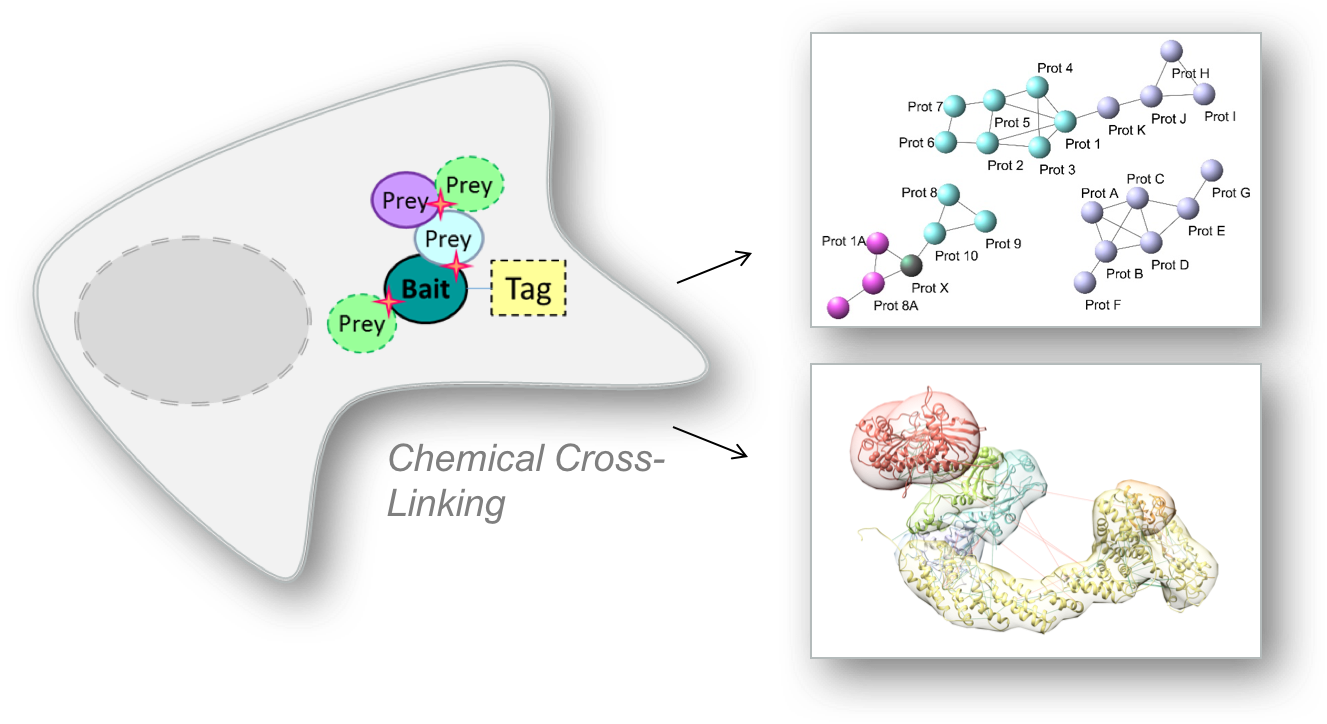Cross-Linking Mass Spectrometry (XL-MS) represents a suite of powerful tools for defining protein-protein interactions (PPIs) and probing PPI interfaces. The combination of chemical cross-linking and AP-MS strategies allows for the capture and identification of not only stable, but also transient, dynamic, and weakly associating proteins. In this way, XL-MS experiments provide complementary PPI information, often defining PPIs that are lost during native AP-MS experiments. What’s more, XL-MS strategies store additional PPI data in the form of cross-linked peptides. Identification of cross-linked residues can provide a map of interacting protein surfaces that can be used for:
- Building direct PPI networks (versus inferred); and
- Mapping PPI interfaces for integrative structural determination of protein complexes.

Our lab utilizes a specialized XL-MS approach for in vitro and in vivo applications towards the determination of pathways and structures of protein complexes that have been challenging to define. These include complexes which contain transient interactions, (e.g. substrate-enzyme complexes), flexible subunits, heterogeneous composition or conformation, and subunits with poor solubility or stability.
Currently our main focus is on defining virus-host PPI networks and protein complexes that are involved in viral and bacterial pathogenesis, host innate immunity, and cancer.
